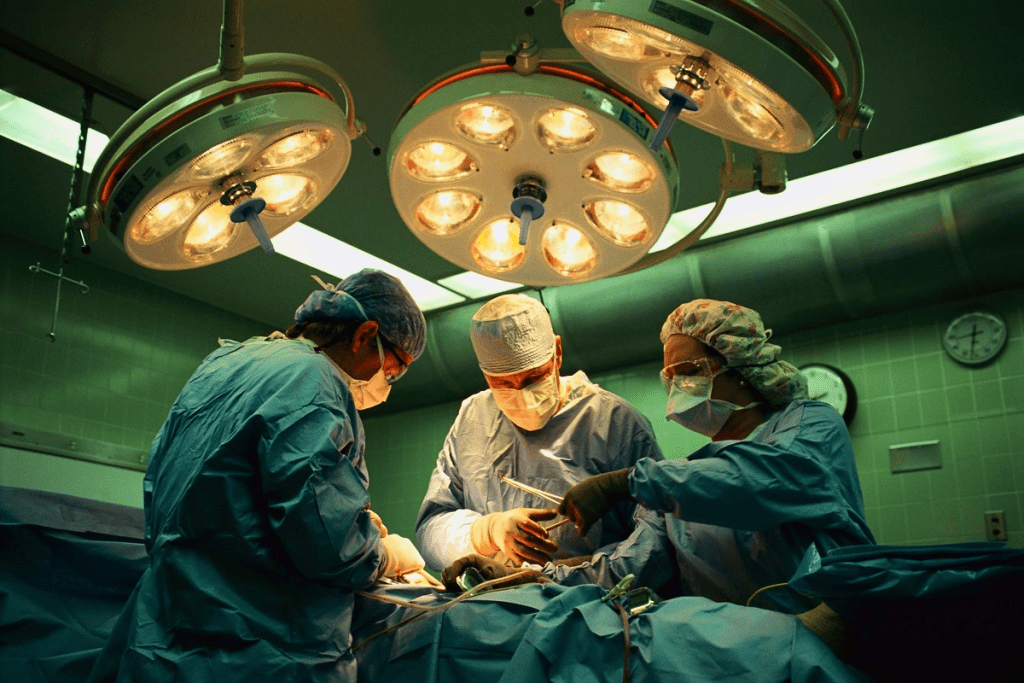Last Updated on October 31, 2025 by

Urethroplasty is a big surgery to fix or rebuild the urethra. It’s often needed because of a stricture or injury. It’s seen as the best treatment for urethral strictures. The surgery uses complex techniques that need specialized expertise.
This surgery is complex because it needs general anesthesia and careful surgical skills. It’s considered a major operation. The success of urethral stricture surgery depends on several things. These include the stricture’s length and location, and the patient’s health.
Urethroplasty is a major surgery for several reasons. It’s more complex than other treatments. Let’s look at why it’s so significant.
In urology, major surgery means it’s complex and takes a lot of time to recover. Urethroplasty is one of these surgeries. It needs a lot of care before and after the surgery. Major surgery in urology requires skill and detailed care.

Urethral stricture disease makes the urethra narrow. It can be caused by injury or infection. This condition is complex because of the delicate urethral tissue. Treating stricture of the urethra needs a deep understanding of the urethra and its risks.
Urethroplasty needs general anesthesia for comfort during the surgery. General anesthesia is a big part of major surgery. It’s risky and needs careful monitoring by an anesthesiologist. This shows why urethroplasty is a major surgery.
The success of urethroplasty depends on the specialized surgical expertise of the urologist. Urethral surgery is very detailed. Patients should find surgeons with a lot of experience in this area.
In conclusion, urethroplasty is a major surgery. It’s complex, needs general anesthesia, and requires specialized skills. Knowing this is important for patients thinking about this surgery.
The urethroplasty procedure has several key steps, starting with a detailed preoperative check-up. This first step is vital for figuring out the best surgery plan.
Before surgery, patients get a full check-up to see how bad the urethral stricture is. This includes tests like retrograde urethrography and voiding cystourethrography. We also look at their medical history and do a physical exam to see if anything might affect the surgery or recovery.
There are many ways to do urethroplasty, each suited for different cases. The main methods are:
We pick the best method for each patient based on their specific situation and the stricture’s details.

The time it takes for urethroplasty can vary a lot, usually between 130 to 424 minutes. The case’s complexity, the surgery type, and the patient’s health all play a role in how long it takes.
During surgery, we handle tissues very carefully to avoid harming nerves or blood vessels. This careful handling is key to avoiding problems and getting the best results. We also keep a close eye on the patient’s vital signs during the procedure.
Knowing about the urethroplasty process helps patients get ready for surgery and recovery. Our team is dedicated to giving personalized care and support every step of the way.
The recovery time after urethroplasty is key for good results. We help patients through this big surgery. Knowing about the hospital stay and care after surgery is important for a smooth recovery.
Patients usually stay in the hospital for 1 to 5 days after urethroplasty. This time lets our team watch for any problems and manage pain well. The exact stay depends on the patient and the surgery’s complexity.
Our team gives detailed care after surgery, watching for issues like infection or bleeding. We teach patients about wound care and the need for follow-up visits. Good care helps avoid problems and helps healing.
Managing pain is a big part of care after urethroplasty. We use different ways to reduce pain, like medicine and other help. We want patients to be comfortable while they heal.
Patients should not lift heavy, do hard activities, or bend a lot at first. These rules help avoid problems and help the repair heal. We guide each patient on when to start doing more things, based on how they’re doing.
Knowing about the recovery after urethroplasty helps patients get ready. Our team works hard to give the best care and support. We aim for the best results for those having urethra surgery or uti surgery.
Urethroplasty, like any big surgery, has many possible complications. These can vary in how serious they are. It’s key for patients to know these risks to make good choices about their treatment.
Grade I complications happen in about 35% of urethroplasty patients. These are usually small issues like wound infections or minor urinary tract infections. They can often be treated without needing more serious action.
Grade II complications affect about 11% of patients. These might need more medical help. Examples include bigger infections or problems with the urethral catheter that need treatment.
Severe complications, happening in about 12%, can really affect patient outcomes. These might include serious infections, a lot of bleeding, or scar tissue in the urethra. This could lead to more problems or the need for more surgery.
Knowing about these possible complications is very important. It helps both patients and doctors prepare and manage risks better. This can lead to better results for patients.
Urethroplasty is a top choice for treating urethral stricture disease. It offers lasting benefits to patients. We’ll look into its long-term success and what makes it effective.
Research shows that 10% to 20% of patients need another surgery within five years. But, most patients see long-lasting relief from their symptoms. A study on PubMed Central highlights the importance of knowing these rates.
Most patients, up to 89%, are very happy with the results. They see big improvements in their urine flow and life quality. Happy patients are key to measuring urethroplasty’s success.
Urethroplasty has a success rate of about 91%. This shows how good the surgery is. It’s thanks to better techniques and skilled surgeons.
Many things can change how well urethroplasty works. These include how long the stricture is, what caused it, and any previous treatments. Knowing these helps plan better care for each patient.
In summary, urethroplasty has great long-term results. Patients are happy, and the surgery works well most of the time. By understanding what affects these results, we can keep improving care for those who have this surgery.
Urethroplasty is a complex procedure that needs a team effort for success. The complexity of ureteroplasty and urethra cleaning/scraping surgery requires special skills. Sometimes, urethrostomy is needed too.
Having a skilled and experienced team is key to great results. The use of general anesthesia and possible complications highlight the need for a team. This team ensures the best care for patients undergoing urethroplasty.
By focusing on expertise in urethroplasty, we can give patients the care they need. This care addresses their unique needs and helps them recover well.
Urethroplasty is a surgery to fix or rebuild the urethra. This is often needed because of a stricture or injury.
Yes, it’s a major surgery. It’s complex and requires general anesthesia.
There are a few common methods. These include anastomotic urethroplasty, buccal mucosal onlay graft, and scrotal or penile island flap.
Surgery time varies. It can be from 130 to 424 minutes, based on the case’s complexity.
Hospital stay usually lasts from 1 to 5 days after surgery.
Complications can range from minor to serious. Rates are 35%, 11%, and 12% respectively.
Re-stricture rates are 10% to 20% at five years. Satisfaction rates are up to 89%, with a success rate of about 91%.
Sometimes, a damaged urethra won’t heal naturally. Surgery, like urethroplasty, might be needed.
It’s when the urethra narrows. This can happen due to injury, infection, or other reasons.
Urethroplasty fixes the urethra. Ureteroplasty fixes the ureter, which is part of the urinary system but different from the urethra.
Before surgery, imaging studies are done. They help figure out the stricture’s length and location.
After surgery, pain management plans are followed. They aim to reduce discomfort.
Yes, patients should avoid heavy lifting and strenuous activities at first.
Outcomes can be influenced by stricture length, cause, and previous treatments.
Subscribe to our e-newsletter to stay informed about the latest innovations in the world of health and exclusive offers!